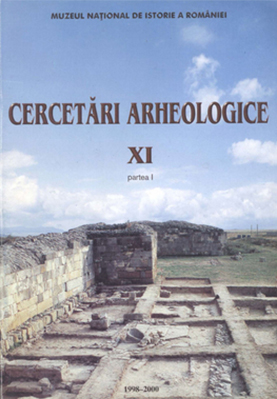Factori ce influenţează structura spectrelor sporo-polinice
Factors influencing the structure of sporo-pollen spectra
Author(s): Mihai TomescuSubject(s): Archaeology
Published by: MUZEUL NAȚIONAL DE ISTORIE A ROMÂNIEI
Keywords: structure of sporo-pollen spectra;
Summary/Abstract: The paper is a review of the main factors influencing the structure of pollen spectra. Pollen productivity is controlled by the dispersal efficiency of pollen grains, which depends on the transport agent. Anemophilous species generally have higher pollen production than entomophilous ones. Pollen productivity also varies within the same species, depending on the environment, and even within one individual, from one year to another. Pollen dispersaldepends on the transport agents. Entomophilous species have poor pollen dispersion, whereas the pollen of anemophilous ones can be transported over great distances. Cleistogamous species show low pollen productivity and very poor pollen dispersal. The pollen influx in one particular place represents a very small fraction of the pollen quantities that are transported through the atmosphere; this pollen influx is made of pollen coming from different distances. Pollen sedimentation differs from one depositional environment to another. Pollen spectra of marine sediments reflect very distorted and biased images of the vegetation on the continent. Fluvial deposits contain mixtures of pollen coming from all vegetal associations of the river catchment area. Lacustrine sediments, well-stratified and favoring pollen preservation, are very suitable for pollen analysis and vegetation reconstructions, as are also peat bogs. Although absolute pollen frequencies are very low in glaciers, pollen is well stratified. True pollen stratification does not exist in soils, due to the migration of pollen mediated by gravitation, water or living creatures; this leads to a mixing of the pollen of different ages. Rock shelter- and especially cave sediments, even if generally suitable for pollen analysis, can yield biased pollen spectra as a result of air streams controlled by the cavities topography. Due to their sporopollenin content, pollen and spores are exceptionally resistant to the action of agents that destroy vegetal matter, except oxidation. Well-aerated and high pH environments favor their chemical or biochemical corrosion. Pollen susceptibility to corrosion varies from one species to another and seems to be controlled mainly by the sporopollenin content; high values of the latter induce high resistance of pollen to corrosion. As a result of the interaction of all these factors, certain species may be over- or under-represented in pollen spectra in particular conditions
Journal: Cercetări Arheologice
- Issue Year: XI/2000
- Issue No: 1
- Page Range: 545-576
- Page Count: 32
- Language: Romanian

